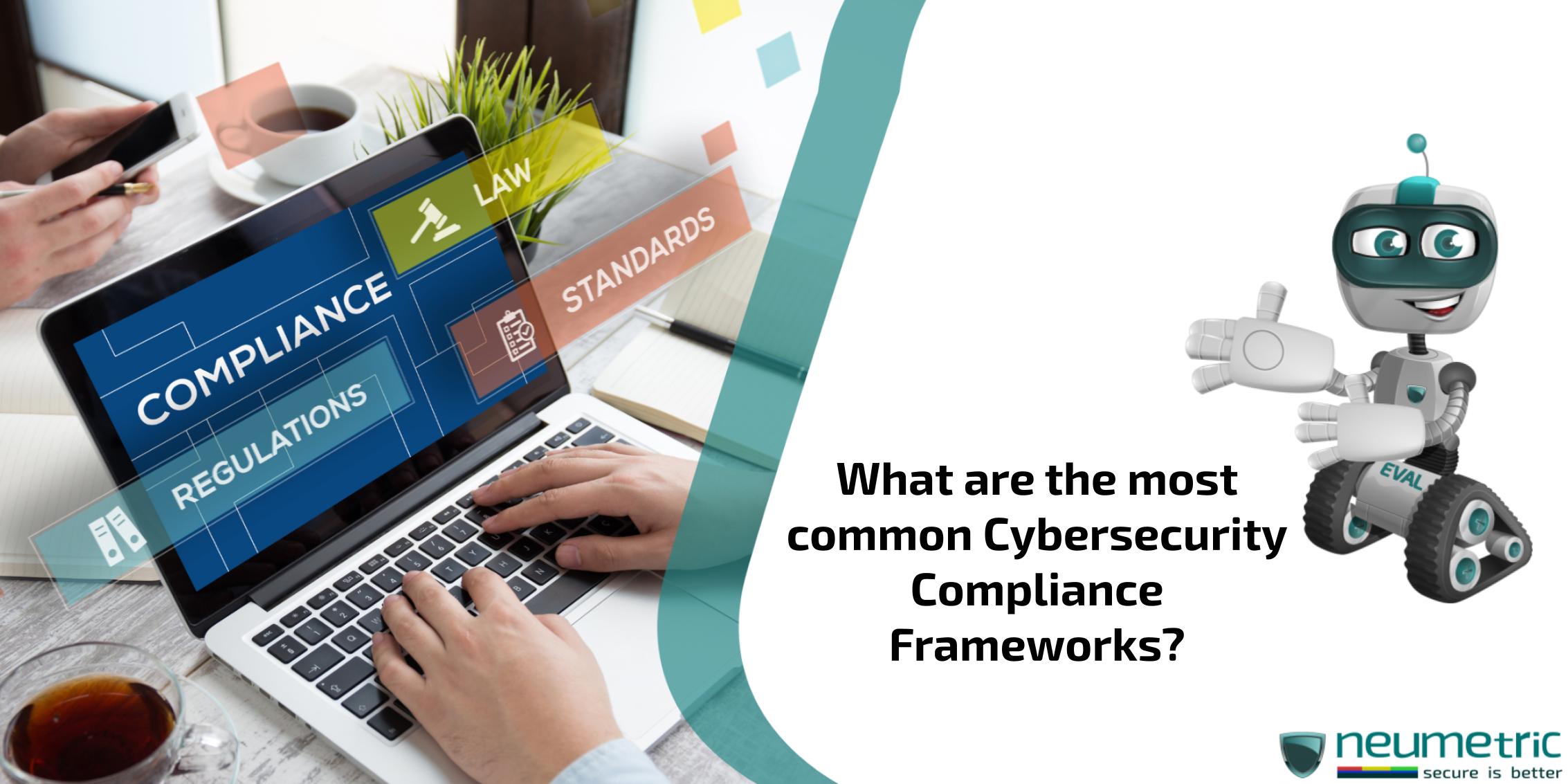Table of Contents
ToggleIntroduction
In today’s digital landscape, cybersecurity has become a paramount concern for organizations of all sizes & industries. As the threat of data breaches, cyber attacks & other malicious activities continues to escalate, compliance with established security frameworks has become a crucial aspect of maintaining a robust & resilient IT infrastructure. Cybersecurity compliance frameworks provide a structured approach to managing & mitigating cyber risks, ensuring that organizations adhere to industry best practices & regulatory requirements.
In this comprehensive journal, we will delve into the most common cybersecurity compliance frameworks, exploring their key features, benefits & implementation considerations. By understanding the nuances of these frameworks, organizations can make informed decisions & choose the most suitable approach to protect their data, systems & reputation.
Understanding Cybersecurity Compliance Frameworks
Cybersecurity compliance frameworks are a set of standards, guidelines & controls that organizations can adopt to enhance their security posture & meet regulatory obligations. These frameworks provide a structured & systematic approach to identifying, assessing & managing cyber risks, ultimately helping organizations to safeguard their sensitive information & critical assets.
The Importance of Cybersecurity Compliance
Compliance with cybersecurity frameworks is not just a matter of legal or regulatory requirements; it also offers numerous benefits that can contribute to an organization’s overall success. Some of the key reasons why cybersecurity compliance is essential include:
- Risk Mitigation: Adhering to cybersecurity compliance frameworks helps organizations identify & address potential vulnerabilities, reducing the likelihood of successful cyber attacks & data breaches. By implementing the prescribed controls & measures, organizations can enhance their resilience & minimize the impact of security incidents.
- Regulatory Compliance: Many industries are subject to specific regulations & standards that mandate the implementation of certain cybersecurity practices. Compliance with these frameworks ensures that organizations meet the necessary legal & regulatory requirements, avoiding potential fines, legal consequences & reputational damage.
- Improved Security Posture: Cybersecurity compliance frameworks provide a comprehensive & structured approach to security, guiding organizations in the implementation of best practices & the adoption of cutting-edge security technologies. This, in turn, enhances the overall security posture of the organization, making it more resilient to evolving cyber threats.
- Stakeholder Confidence: Demonstrating adherence to recognized cybersecurity compliance frameworks can instill confidence in stakeholders, including customers, business partners & investors. This can lead to improved brand reputation, increased customer trust & better business opportunities.
Common Cybersecurity Compliance Frameworks
The cybersecurity landscape is populated by a diverse array of compliance frameworks, each with its own unique focus & requirements. Here are some of the most widely adopted & influential cybersecurity compliance frameworks:
- The National Institute of Standards & Technology [NIST] Cybersecurity Framework: The NIST Cybersecurity Framework is a widely recognized & comprehensive framework that provides a standardized approach to identifying, assessing & managing cyber risks. It consists of five core functions: Identify, Protect, Detect, Respond & Recover. The framework is widely adopted across various industries, including healthcare, finance & critical infrastructure.
- The Health Insurance Portability & Accountability Act [HIPAA]: HIPAA is a set of regulations that specifically address the security & privacy of protected health information [PHI] in the healthcare industry. It outlines requirements for the protection of electronic protected health information [ePHI], including access controls, encryption & incident response procedures.
- The Payment Card Industry Data Security Standard [PCI DSS]: PCI DSS is a set of security standards designed to ensure the secure handling of credit card transactions & the protection of cardholder data. It is mandated for any organization that processes, stores or transmits credit card information & it covers a wide range of security controls, from network security to access management.
- The General Data Protection Regulation [GDPR]: GDPR is a comprehensive data privacy & security regulation that applies to organizations that collect, process or store the personal data of individuals within the European Union [EU]. It establishes strict requirements for data protection, including the implementation of technical & organizational measures to ensure the security & privacy of personal data.
- The Center for Internet Security [CIS] Controls: The CIS Controls, formerly known as the Critical Security Controls, is a prioritized set of cybersecurity best practices that are designed to mitigate the most common & impactful cyber threats. The framework provides a practical & actionable approach to enhancing an organization’s security posture, covering areas such as asset management, vulnerability management & access control.
- The ISO/IEC 27001 Information Security Management System [ISMS]: ISO/IEC 27001 is an internationally recognized standard that provides a framework for establishing, implementing, maintaining & continually improving an Information Security Management System [ISMS]. It covers a wide range of security controls, including risk assessment, access management & incident response procedures.
Comparing & Contrasting Cybersecurity Compliance Frameworks
While each of the aforementioned cybersecurity compliance frameworks shares the common goal of enhancing an organization’s security posture, they differ in their scope, focus & specific requirements. Understanding the key differences between these frameworks can help organizations make informed decisions & choose the most suitable approach for their unique needs.
- Scope & Applicability: The scope & applicability of cybersecurity compliance frameworks can vary significantly. Some, like HIPAA & PCI DSS, are industry-specific, addressing the unique security requirements of healthcare & financial organizations, respectively. Others, such as the NIST Cybersecurity Framework & the CIS Controls, are more broadly applicable, providing a comprehensive approach to cybersecurity that can be adopted across various sectors.
- Control Requirements: The specific control requirements & security measures prescribed by each framework can also differ. For example, HIPAA emphasizes the protection of PHI, while PCI DSS focuses on the secure handling of cardholder data. The NIST Cybersecurity Framework, on the other hand, offers a more holistic approach, covering a wide range of security controls across the five core functions: Identify, Protect, Detect, Respond & Recover.
- Compliance Certification & Auditing: The process of achieving & maintaining compliance with different cybersecurity frameworks can also vary. Some frameworks, like PCI DSS, require organizations to undergo regular audits & obtain third-party certifications to demonstrate compliance. Others, such as the NIST Cybersecurity Framework, are more self-assessment-oriented, allowing organizations to evaluate their own security posture against the framework’s guidelines.
- Legal & Regulatory Implications: The legal & regulatory implications of cybersecurity compliance frameworks can also play a significant role in an organization’s decision-making process. Frameworks like GDPR & HIPAA are mandated by law & carry substantial penalties for non-compliance, while others, such as the NIST Cybersecurity Framework, are more voluntary in nature.
Implementing Cybersecurity Compliance Frameworks
Effectively implementing cybersecurity compliance frameworks requires a comprehensive & strategic approach. Here are some key steps organizations can take to ensure successful implementation:
- Assess Current Security Posture: Begin by conducting a thorough assessment of your organization’s current security posture, identifying existing vulnerabilities, gaps & strengths. This will help you determine which compliance framework(s) are most suitable for your organization’s needs & existing security measures.
- Develop a Compliance Roadmap: Based on the initial assessment, create a detailed roadmap that outlines the steps required to achieve & maintain compliance with the chosen framework[s]. This roadmap should include specific timelines, resource allocations & milestones to track progress.
- Establish Governance & Accountability: Ensure that clear roles, responsibilities & ownership are defined for the implementation & ongoing management of the compliance framework. Designate a dedicated team or individual to oversee the compliance efforts & report on progress to senior leadership.
- Invest in Training & Awareness: Provide comprehensive training & awareness programs for all employees to ensure they understand the importance of cybersecurity compliance, their individual roles & the specific requirements of the chosen framework(s).
- Implement Security Controls & Technologies: Deploy the necessary security controls, technologies & solutions to meet the requirements of the selected compliance framework(s). This may include implementing access controls, encryption, incident response procedures & continuous monitoring capabilities.
- Continuously Monitor & Adapt: Regularly review & update your cybersecurity compliance efforts to address evolving threats, regulatory changes & organizational requirements. Continuously monitor your security posture & make necessary adjustments to maintain compliance & enhance your overall security resilience.
Conclusion
In today’s rapidly evolving cybersecurity landscape, the adoption of recognized compliance frameworks has become a critical component of an organization’s overall security strategy. By understanding the key features, benefits & implementation considerations of the most common cybersecurity compliance frameworks, organizations can make informed decisions & choose the most suitable approach to protect their data, systems & reputation.
As the threats & regulatory landscape continue to evolve, it is essential for organizations to stay vigilant, continuously review their compliance efforts & adapt their security measures to address emerging challenges. By embracing a proactive & comprehensive approach to cybersecurity compliance, organizations can enhance their resilience, maintain stakeholder trust & thrive in an increasingly digital & interconnected world.
Key Takeaways
- Cybersecurity compliance frameworks provide a structured approach to identifying, assessing & managing cyber risks, helping organizations enhance their security posture & meet regulatory requirements.
- The most common cybersecurity compliance frameworks include the NIST Cybersecurity Framework, HIPAA, PCI DSS, GDPR, the CIS Controls & ISO/IEC 27001.
- Each framework differs in its scope, focus, control requirements & compliance certification process, making it essential for organizations to understand the nuances & choose the most suitable approach for their specific needs.
- Successful implementation of cybersecurity compliance frameworks requires a comprehensive strategy, including assessing current security posture, developing a compliance roadmap, establishing governance, investing in training & continuously monitoring & adapting the efforts.
- Adopting multiple cybersecurity compliance frameworks can provide organizations with a more holistic approach to risk mitigation, improved organizational resilience & increased stakeholder confidence.
Frequently Asked Questions [FAQ]
What are the key differences between the NIST Cybersecurity Framework & ISO/IEC 27001?
The NIST Cybersecurity Framework is a more broadly applicable framework that provides a structured approach to identifying, assessing & managing cyber risks. It is centered around five core functions: Identify, Protect, Detect, Respond & Recover. In contrast, ISO/IEC 27001 is a more comprehensive Information Security Management System [ISMS] standard that requires organizations to implement a range of security controls & undergo third-party certification.
How does PCI DSS differ from HIPAA in terms of compliance requirements?
PCI DSS is specifically focused on the secure handling of credit card transactions & the protection of cardholder data. It outlines a set of technical & operational requirements for organizations that process, store or transmit credit card information. HIPAA, on the other hand, is primarily concerned with the security & privacy of protected health information [PHI] in the healthcare industry, including electronic protected health information [ePHI].
What are the potential legal & financial consequences of non-compliance with cybersecurity frameworks?
The legal & financial consequences of non-compliance can be severe, depending on the specific framework & regulatory environment. For example, organizations that fail to comply with GDPR can face fines of up to four percent (4%) of their global annual revenue or twenty (20) million Euros, whichever is greater. Non-compliance with HIPAA can result in civil & criminal penalties, including fines & potential jail time for individuals. Failure to meet PCI DSS requirements can lead to hefty fines, card brand penalties & the revocation of the organization’s ability to process credit card transactions.
How can organizations ensure successful implementation of cybersecurity compliance frameworks?
Key steps for successful implementation include:
- Assessing the organization’s current security posture & identifying gaps.
- Developing a comprehensive compliance roadmap with clear milestones & responsibilities.
- Establishing effective governance & accountability structures.
- Investing in employee training & awareness programs.
- Implementing the necessary security controls & technologies.
- Continuously monitoring, reviewing & adapting the compliance efforts to address evolving threats & organizational changes.
What are the benefits of adopting multiple cybersecurity compliance frameworks?
Adopting multiple cybersecurity compliance frameworks can provide several benefits, including:
- Comprehensive risk mitigation by addressing a broader range of security controls & requirements,
- Enhanced organizational resilience & preparedness for different types of cyber threats,
- Improved stakeholder confidence & credibility by demonstrating a commitment to security best practices
- Increased flexibility & adaptability in navigating the evolving cybersecurity landscape.





